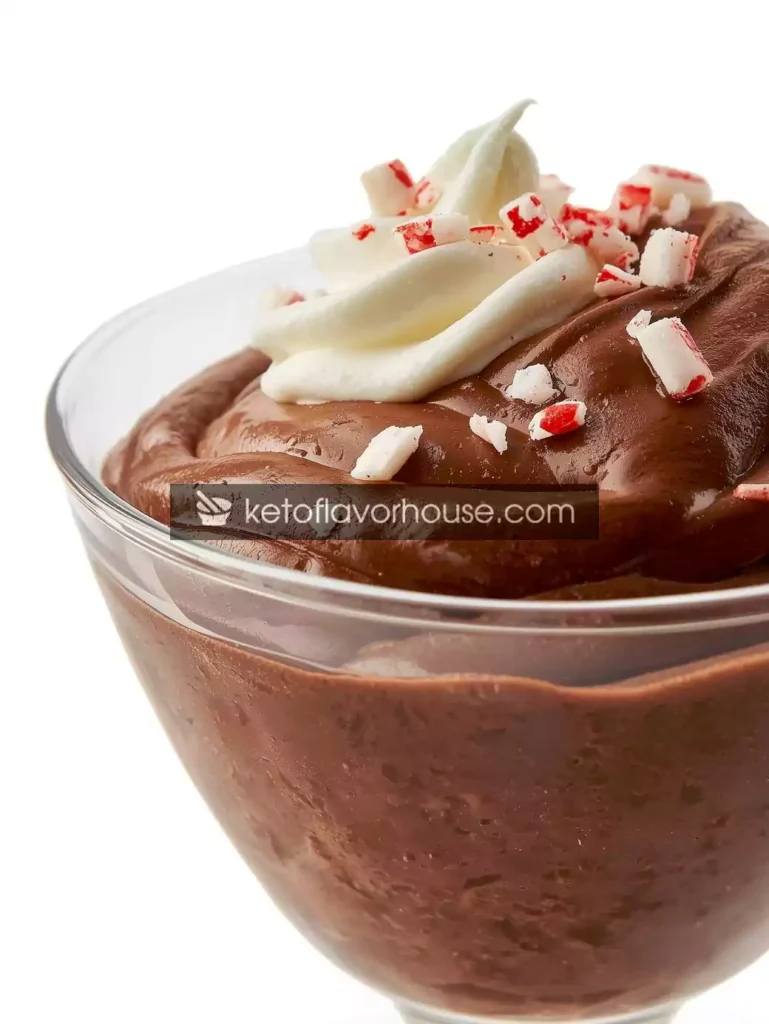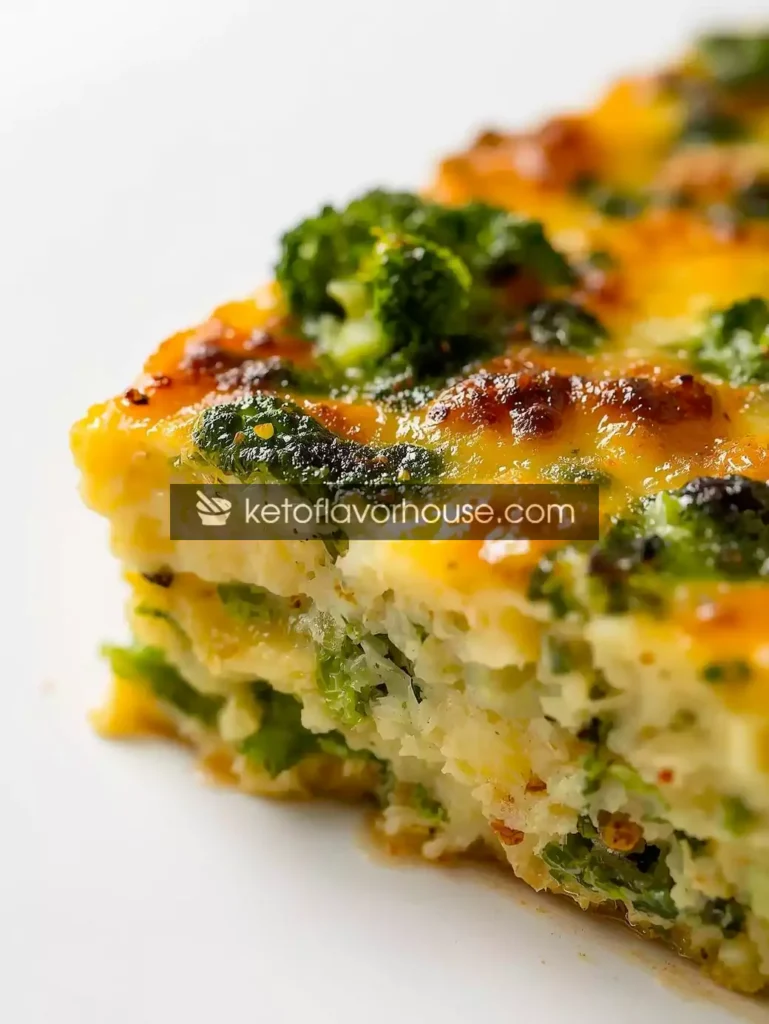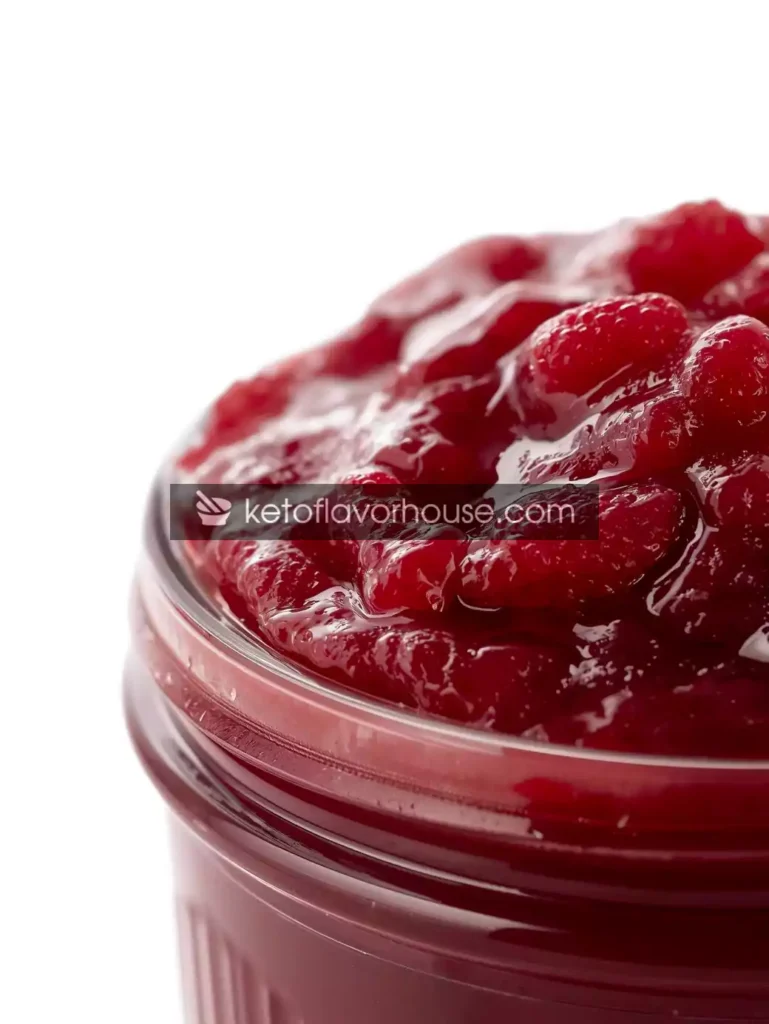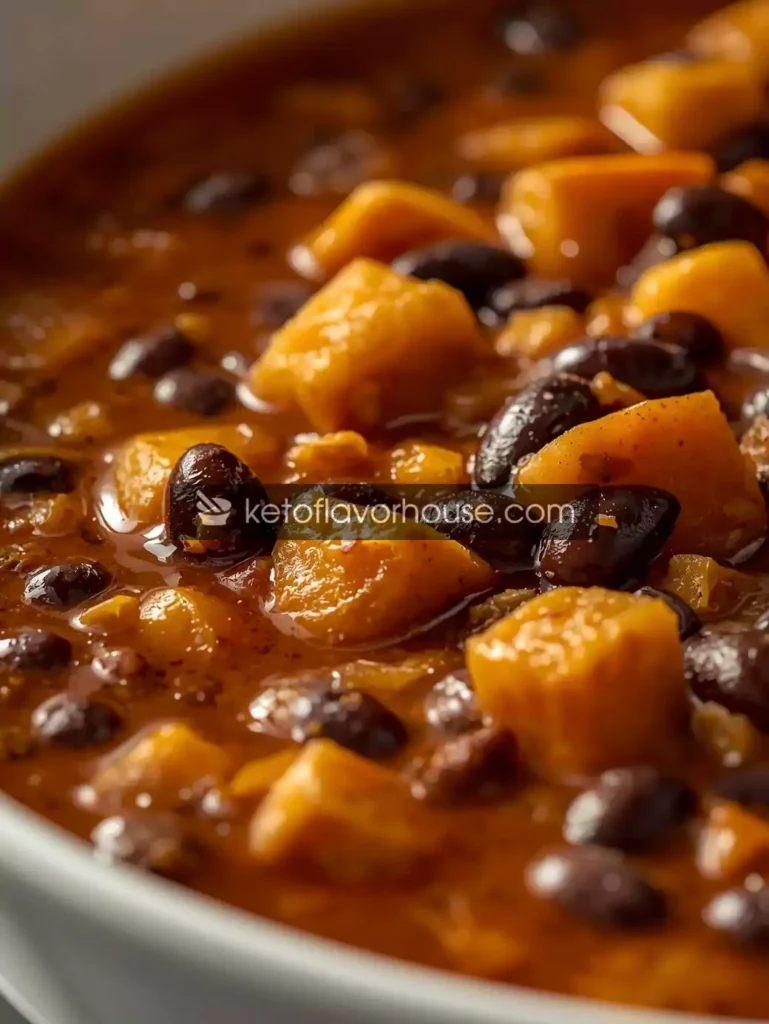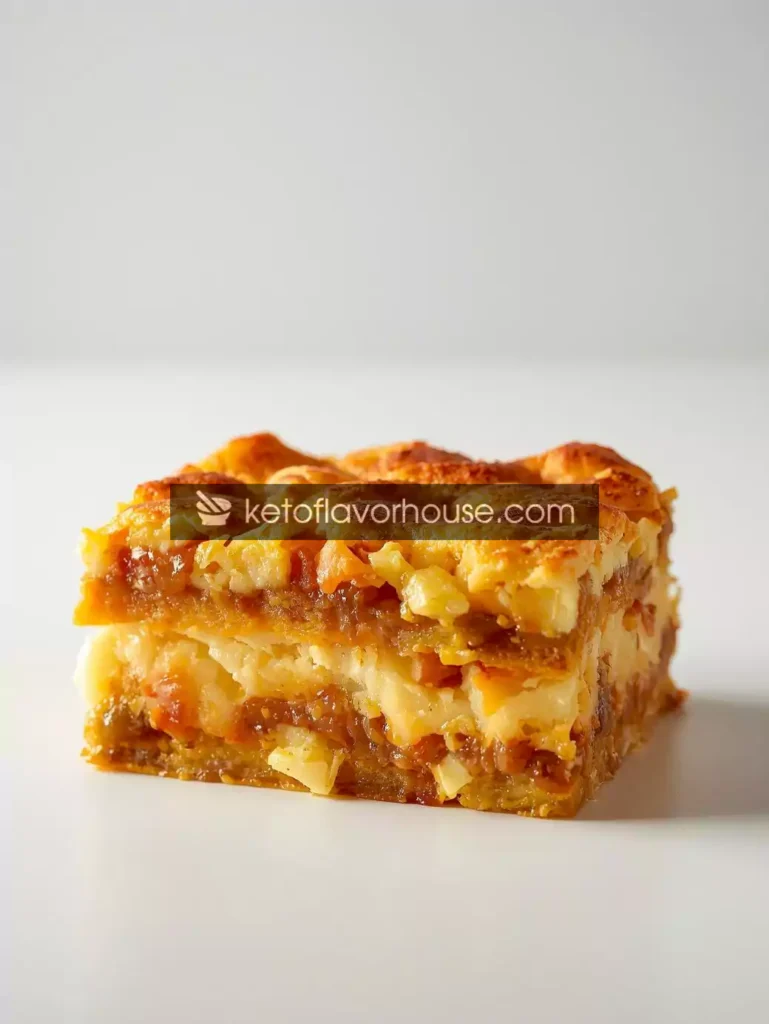This post may contains Amazon affiliate and other affiliate links. If you make a purchase through these links, I may earn a small commission at no extra cost to you. Your support helps me continue to provide quality content. I only recommend products I personally trust and believe will add value to your experience. For more details, please visit my Privacy Policy.
If you’re craving something chocolatey, minty, and secretly sensible, this Bariatric Peppermint Mocha Protein Pudding will become your new holiday (or anytime) go-to. Bariatric Peppermint Mocha Protein Pudding is a silky, coffee-kissed pudding that packs a protein punch while keeping carbs and added sugar low — exactly what many bariatric eaters look for when they want a treat without undoing their hard work.
I remember the first time I made this pudding: it was a blustery December afternoon, and I wanted the warm comfort of a peppermint mocha but without the sugar crash. After a few experiments — blending, tasting, and adjusting — I arrived at this thick, velvet dessert that tastes extravagant but behaves like a responsible, bariatric-friendly snack. Read on: I’ll walk you through every tool, ingredient swap, and tiny trick that makes it shine.
Why this recipe is great for bariatric eaters (and who will love it)
This Bariatric Peppermint Mocha Protein Pudding is ideal for anyone following a bariatric eating plan who wants a sweet, portion-controlled dessert that doesn’t spike blood sugar or sacrifice protein. It’s especially great for later post-op stages, people who need a higher-protein snack between meals, and holiday hosts who want to bring something indulgent that fits low-carb goals.
What makes it special:
- Silky, dessert-style texture without flour or sugar
- High in protein to support satiety and muscle maintenance
- Low net carbs and no added sugar (sweetened with erythritol/monk fruit)
- Simple, fast, and easily portioned for controlled servings
Why You’ll Love This Recipe
- 🍫 Rich chocolate mocha flavor without the guilt
- 🌿 Fresh peppermint lift — festive but not overpowering
- 💪 High protein to support bariatric nutrition goals
- ⏱️ Ready in 10–15 minutes, chills fast — perfect for weeknight treats
- 👨👩👧 Family friendly — make a small batch for yourself or a bigger one for company
My Personal Experience
I’ve been down the road of trying to “bariatric-ify” a holiday drink many times. The first batch I created was too thin; the second was gritty; and the third (this one) finally hit the balance: creamy, scoopable, and sweet enough to feel like a celebration. I learned that using a mix of cultured dairy (for body and tang) and a scoop of neutral chocolate protein powder yields the best texture while keeping protein per portion high. The peppermint is a gentle accent, not an astringent smack, and the tiny bit of instant espresso brings warmth and depth.
Because portions matter after surgery, I started serving this in small glass jars. They look special, and that visual portion control is both satisfying and practical.
Required Equipment
Blender or Food Processor
You’ll want a high-speed blender or a food processor to make the pudding ultra-smooth. A blender emulsifies the cottage cheese/Greek yogurt with protein powder so there’s no graininess. Alternative: a stick blender can work in a deep bowl if you don’t have a full blender.
Mixing Bowls
A medium mixing bowl is useful for combining dry ingredients and for tasting. Stainless or glass is best for chilling and storing.
Measuring Cups & Spoons
Accurate measures matter here — especially the protein powder and cocoa — so keep your measuring tools handy.
Whisk or Silicone Spatula
A whisk helps incorporate ingredients if you’re doing a stovetop warm-up; a spatula helps scrape every creamy bit from the blender.
Small Serving Jars or Ramekins
Portioning is part of successful bariatric eating. Small jars or 4–6 oz ramekins make serving pretty and practical.
Refrigerator
The pudding benefits from at least 30 minutes chilling to firm up and let the flavors meld.
Ingredients & Substitutions
Yields: about 4 small servings (adjust quantities as needed). Each serving is designed to be protein-forward and portion friendly.
- 1 cup (8 oz) plain Greek yogurt (nonfat or low-fat)
Why it matters: Adds thick body and high-quality protein while keeping carbs relatively low.
Substitutions: Use plain skyr for higher protein or dairy-free coconut yogurt if you tolerate it (note: protein will drop with dairy-free subs). - 1/2 cup low-fat cottage cheese
Why it matters: Adds creaminess and extra protein without much sugar. Blended, it disappears into a silky texture.
Substitutions: Swap with an extra 1/2 cup Greek yogurt if you prefer; for dairy-free, use silken tofu (texture changes and protein value will vary). - 1 scoop (about 25–30 g) chocolate or mocha protein powder
Why it matters: The protein anchor of the pudding — helps meet protein targets and contributes chocolate/mocha flavor.
Substitutions: Use whey protein isolate for the smoothest texture or a pea/rice blend for a dairy-free option (expect slightly different mouthfeel). - 1/2 cup unsweetened almond milk (or other low-carb milk)
Why it matters: Thins the mixture just enough to make it spoonable without diluting protein density.
Substitutions: Unsweetened soy milk for slightly more protein; light coconut milk if you want a silkier mouthfeel (higher calories). - 2 tablespoons unsweetened cocoa powder
Why it matters: Delivers deep chocolate flavor without sugar. Cocoa also contributes a touch of fiber.
Substitutions: Use carob powder if cocoa tastes too intense for you (carob is sweeter, adjust sweetener). - 1–2 teaspoons instant espresso or strong brewed coffee (adjust to taste)
Why it matters: The mocha backbone. Coffee deepens the chocolate notes and makes a small batch taste sophisticated.
Substitutions: Omit for a straight peppermint chocolate pudding; or use 1 tbsp brewed coffee if you want less intensity. - 1/4–1/3 cup erythritol or preferred zero-calorie sweetener (to taste)
Why it matters: Provides sweetness without sugar spikes. Use a granulated sweetener that measures similar to sugar for ease.
Substitutions: Monk fruit or stevia blends are fine — taste and adjust. - 1/2–1 teaspoon peppermint extract (start small; extract is potent)
Why it matters: A little goes a long way — it gives holiday sparkle without adding carbs.
Substitutions: Use fresh crushed mint for garnish and reduce extract if you prefer a gentler flavor. - Pinch of sea salt and 1/2 teaspoon vanilla extract
Why it matters: Salt brightens the chocolate; vanilla rounds the flavor. - Optional: 2 tablespoons heavy cream or coconut cream
Why it matters: For a silkier, more luxurious mouthfeel — add if you want a bit more fat and richness. Omit if keeping calories lower. - Garnish ideas: shaved sugar-free chocolate, crushed mint leaves, a few cacao nibs, or a light dusting of cocoa.
How to Make Bariatric Peppermint Mocha Protein Pudding
Step 1 — Prep & taste plan
Measure all ingredients. Taste your protein powder with a bit of water or almond milk — some are sweeter than others. That affects how much sweetener you’ll need. Pre-measure sweetener so the final tasting is quick.
Mini tip: If your protein powder is very sweet, start with less sweetener and add later.
Step 2 — Blend the base
Place the Greek yogurt, cottage cheese, almond milk, cocoa powder, espresso powder, vanilla, and a pinch of salt into your blender. Pulse to combine. Add the protein powder and pulse again until perfectly smooth. If you’re using heavy cream, add it now and give one final pulse.
Mini tip: Don’t overheat or overblend — you want smoothness, not aeration. If you notice tiny grains, blend an extra 10–15 seconds.
Step 3 — Sweeten and perfume
Taste the mixture and add erythritol/monk fruit to your preference. Add peppermint extract a few drops at a time — it’s potent. Blend briefly after each addition and taste again.
Encouragement: Don’t worry if the first taste seems a bit flat; chilling will bring the flavors together.
Step 4 — Chill & set
Spoon the pudding into small jars or ramekins. Cover and refrigerate at least 30 minutes, preferably 1 hour. The chilling firms the texture and lets the mocha and peppermint marry.
Mini tip to avoid sogginess: If you plan to top with crushed peppermint candies or fruit, do that right before serving so toppings stay crisp.
Stove-top variant (if you prefer warm):
Gently warm the almond milk and espresso in a small saucepan — don’t boil. Whisk in cocoa until smooth, then remove from heat. Whisk the protein powder into the warm mixture until dissolved, then temper with a spoonful of the warm liquid into the Greek yogurt/cottage cheese before combining everything. Chill as directed.
Note: Warming can help some protein powders dissolve better, but avoid prolonged heat which can alter texture.
Common Mistakes to Avoid
- Adding too much peppermint extract: A little goes a long way — taste carefully.
- Skipping the chill time: The pudding tastes thin if served immediately. Chilling is essential.
- Using a grainy protein powder: Some lower-cost powders grit the texture; choose an isolate or a powder you know blends well.
- Overthinning: Don’t add too much almond milk. Aim for spoonable, not pourable. You can always thin later when serving.
Pro Tips for Best Results
- For extra silkiness, blend the cottage cheese first, then add yogurt — this helps the curds break down fully.
- If the pudding is too bitter, add a splash more sweetener or a teaspoon of vanilla.
- For a holiday finish, top each serving with a single shaved mint leaf and a few sugar-free chocolate shavings.
- Portion control is your friend—serve in 4–6 oz jars so each serving feels like a treat but stays within bariatric goals.
Bariatric Nutrition & Strategy
Protein is the cornerstone of bariatric nutrition because it supports healing, preserves lean body mass, and helps with satiety. This pudding’s main protein sources — Greek yogurt, cottage cheese, and a scoop of protein powder — combine to provide roughly 16 g of protein per 4-oz serving (see the Nutrition section below for estimates). That’s a solid, snack-friendly amount that helps you meet daily protein targets without heavy carbs.
Timing suggestions:
- Enjoy one small pudding as a post-workout snack to refuel with protein.
- Use it as a controlled dessert after a bariatric-friendly meal — a sweet finish without excess sugar.
- Pair a serving with a small piece of fruit or a few nuts if you need extra calories or variety.
Always check with your bariatric team about portion sizes and when to introduce new textures if you’re early post-op.
Variations You Can Try
- Double Chocolate Peppermint: Stir in 1 tablespoon of melted sugar-free dark chocolate for depth.
- Mocha Coconut: Swap heavy cream with full-fat coconut milk and top with toasted unsweetened coconut.
- Berry Swirl: Fold in 1/4 cup mashed, low-sugar berries for a fruity twist (watch carbs).
- Collagen Boost: Add 1 tablespoon of collagen peptides for extra protein and joint support (no flavor change).
Each variation nudges the macros — watch carbs and calories if you’re tracking points.
Tips for This Recipe
- Serve chilled in clear jars to make even a small portion feel festive.
- Make a double batch for holiday gatherings; store chilled and garnish right before serving.
- If taking to a potluck, transport in a cooler to avoid warmth changing texture.
Optional Additions
- Chia seed sprinkle — adds fiber and a little texture (raises net carbs slightly).
- Crushed sugar-free chocolate — crunch without sugar.
- A dollop of unsweetened whipped cream — richer but increases fat and calories.
Serving Ideas
- Holiday dinner dessert (4 small jars)
- After-lunch treat or evening snack with herbal tea
- Protein-packed mini-dessert for gatherings — great for guests following low-carb diets
Storage Recommendations
- Refrigerator: Store in airtight containers for up to 3–4 days. The texture is best within the first 48 hours.
- Freezer: Not recommended — dairy texture changes after freezing and thawing.
- Reheating: Serve chilled; reheating will change the texture and release whey. If you warmed it as a stovetop variant, warm gently on the stovetop, not in the microwave.
Frequently Asked Questions (FAQ)
Q: Can I freeze this pudding?
A: I don’t recommend freezing. Dairy and protein powders can separate when frozen/thawed, resulting in a grainy texture. Keep it refrigerated and enjoy within 3–4 days.
Q: I’m early post-op — is this safe to eat?
A: This pudding is soft and protein-rich, but early post-op diets are very individualized. Check with your bariatric dietitian or surgical team before introducing new textures or recipes.
Q: What if I’m dairy-intolerant?
A: Use silken tofu plus a plant-based protein powder and coconut yogurt to mimic texture, but expect different flavor and slightly lower protein content. Taste and adjust sweetener.
Q: Can I use different protein powder?
A: Yes — whey isolate yields the creamiest texture. Pea/rice blends will work but might be slightly grainier. Choose a high-quality powder you like to drink.
Q: How many carbs per serving?
A: Approximately 5.3 g total carbs and ~4.3 g net carbs per serving (batch divided into four). See the Nutrition Breakdown below for details — these are estimates.
Q: Is peppermint extract safe?
A: In small amounts (1/2–1 tsp total for the batch) it is safe for most people. Add a few drops at a time and taste.
Q: Can this be made without protein powder?
A: Yes, but protein per serving will drop. To maintain density without powder, increase Greek yogurt or cottage cheese, and consider collagen peptides for extra protein.
Nutritional Breakdown (Per Serving — approx., 1 of 4 servings)
These are estimates based on the recipe as written (including optional 2 tbsp heavy cream). Use your own nutrition calculator for exact numbers based on brands you use.
- Calories: ~122 kcal
- Protein: ~16 g
- Fat: ~5 g
- Total Carbs: ~5.3 g
- Fiber: ~1 g
- Net Carbs: ~4.3 g
- Sugar: ~2.5 g
- Sodium: ~160 mg
These macros make the pudding a protein-heavy, low-carb option suitable for many bariatric plans.
Recipe Snapshot
- Prep Time: 10 minutes
- Chill Time: 30–60 minutes
- Total Time: 40–70 minutes
- Course: Dessert / Snack
- Cuisine: Modern, Low-Carb
- Servings: 4 small jars (about 4–5 oz each)
- Calories (per serving): ~122 kcal
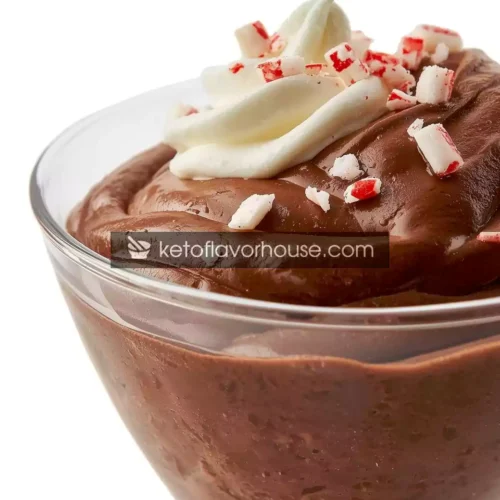
Bariatric Peppermint Mocha Protein Pudding (Low-Carb & Festive Dessert) Recipe
Ingredients
- 1 cup plain Greek yogurt
- 1/2 cup low-fat cottage cheese
- 1 scoop chocolate protein powder ~25–30 g
- 1/2 cup unsweetened almond milk
- 2 tbsp unsweetened cocoa powder
- 1 –2 tsp instant espresso or 1 tbsp brewed coffee
- 1/4 –1/3 cup erythritol or preferred sweetener, to taste
- 1/2 –1 tsp peppermint extract start small
- Pinch salt 1/2 tsp vanilla extract
- Optional: 2 tbsp heavy cream
- Garnish: sugar-free chocolate shavings mint
Instructions
- In a blender combine Greek yogurt, cottage cheese, almond milk, cocoa, espresso, vanilla, and salt.
- Add protein powder and pulse until smooth. Add optional heavy cream and pulse briefly.
- Sweeten with erythritol to taste; add peppermint extract a few drops at a time.
- Spoon into 4 jars; chill at least 30 minutes. Garnish before serving.

